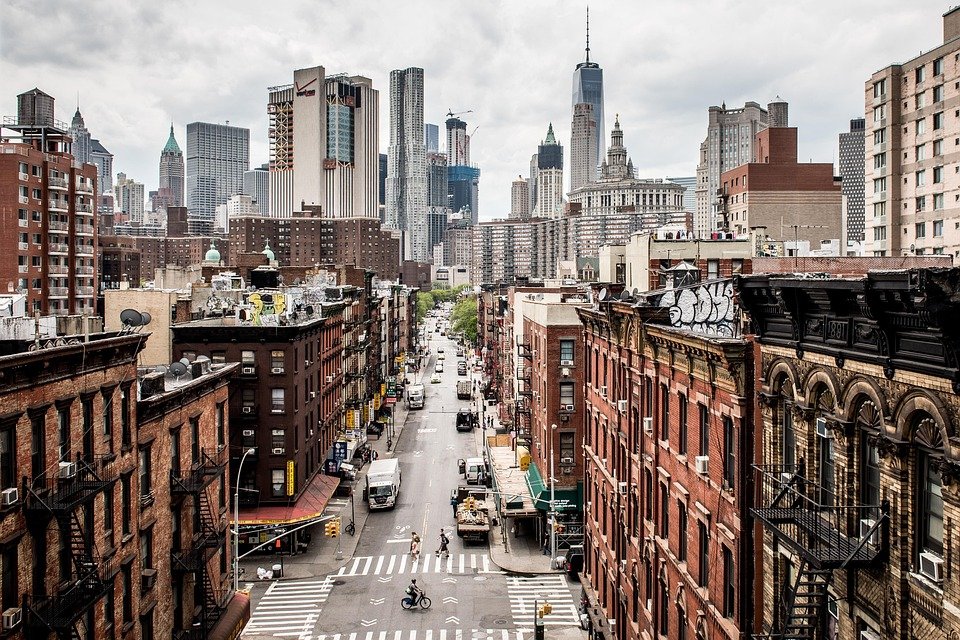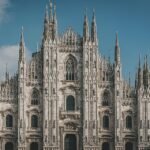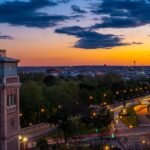Wondering when to go to New York City without running into huge crowds or bad weather? You're not alone! The ideal time to visit this vibrant metropolis depends on several factors, including the weather, your budget, local events, and what you want to do during your trip. Let's dive into the ins and outs of planning your perfect NYC getaway.
Overview of New York City’s Climate
New York City experiences a humid subtropical climate characterized by four distinct seasons: warm summers, cold winters, and transitional seasons of spring and fall. Weather in New York City can vary significantly depending on the time of year.
- Winter (December to February) brings cold temperatures, often dipping down to the 30s°F (around 0-4°C). Snow is possible but varies from year to year.
- Spring (March to May) is mild, with temperatures ranging from the 40s°F (4-9°C) to the 70s°F (21-26°C), creating a lovely backdrop for blooming cherry blossoms and fresh spring air.
- Summer (June to August) can get hot and humid, sometimes reaching the 90s°F (32-37°C), which can feel even warmer with the urban heat island effect.
- Fall (September to November) is ideal for those who enjoy cooler temperatures, with ranges from the 50s°F (10-15°C) to the 70s°F (21-26°C) and stunning fall foliage.
Understanding the seasons in New York City can help you choose the best time for your visit based on what experiences you want to prioritize.
Month-by-Month Breakdown
Let's break it down month by month to help you decide when to travel to New York City:
January – February: Winter Wonderland
- Weather: Cold and often snowy, with temperatures between 25°F and 40°F (-4 to 4°C).
- Events: New Year celebrations, Winter Jazzfest.
- Pros: Cheaper hotel rates and fewer tourists.
- Cons: Chilly weather might limit outdoor activities.
- Best For: Budget travelers and those who enjoy winter sports.
March – May: Spring Awakening
- Weather: Mild temperatures, 40°F to 70°F (4 to 21°C).
- Events: St. Patrick's Day Parade, Cherry Blossom Festival.
- Pros: Beautiful scenery and vibrant energy.
- Cons: Rain is more likely; be prepared to dress in layers.
- Best For: Nature lovers and photographers looking for picturesque scenes.
June – August: Summer Vibes
- Weather: Hot and humid, temperatures often hitting the 80s°F (27-32°C).
- Events: Pride Month, Shakespeare in the Park.
- Pros: Festive atmosphere, long days for exploring.
- Cons: Crowds and high accommodation prices.
- Best For: Beach lovers and those keen on outdoor activities.
September – November: Fall Foliage
- Weather: Cool and comfortable, 50°F to 70°F (10-21°C).
- Events: NYC Marathon, Halloween festivities.
- Pros: Gorgeous fall colors and a reduction in tourists.
- Cons: Hotel prices start to rise again.
- Best For: Romantic getaways and culturally focused trips.
Tips Based on Travel Style
Choosing the right time to visit really depends on your travel style. Here are some recommendations:
-
For Budget Travel: January and February often have the cheapest rates on hotels and flights. If you don't mind the cold, it's a great time to save.
-
For Avoiding Crowds: The shoulder seasons—late fall (around late September to October) and early spring (March to April)—are ideal. You can enjoy popular attractions with fewer people around.
-
For Outdoor Activities: Summer is great for enjoying parks, rooftop bars, and taking advantage of outdoor events, but expect high humidity. Fall offers pleasant weather for walking tours and outdoor explorations.
- For Romantic or Solo Trips: Consider visiting in spring or fall. The ambiance, mild weather, and beautiful surroundings provide a perfect backdrop whether you're enjoying a stroll in Central Park or sipping coffee in a quaint café.
It really depends on what kind of experience you're looking for. Some travelers love spring for the flowers, while others aim for the festive holiday vibe in December.
FAQ
Is January a good time to visit New York City?
Yes, if you're looking for fewer crowds and lower accommodations. Just be ready for the cold!
When is the rainy season in New York City?
Typically, spring (March to May) can see increased rainfall, so pack an umbrella for your adventures.
What's the cheapest time to visit New York City?
January and February offer the best deals, as they fall outside the peak tourist season.
What's the peak season in New York City?
Summer (June to August) is peak season due to school vacations and ideal weather for tourists.
A Personal Touch
Ultimately, the best time to visit New York City boils down to what you want out of your trip. Maybe you're just looking for the quiet vibe of late winter or the bustling energy of summer. Either way, I hope this guide helps you navigate the options and find your ideal time to explore one of the most iconic cities in the world! Happy planning!








